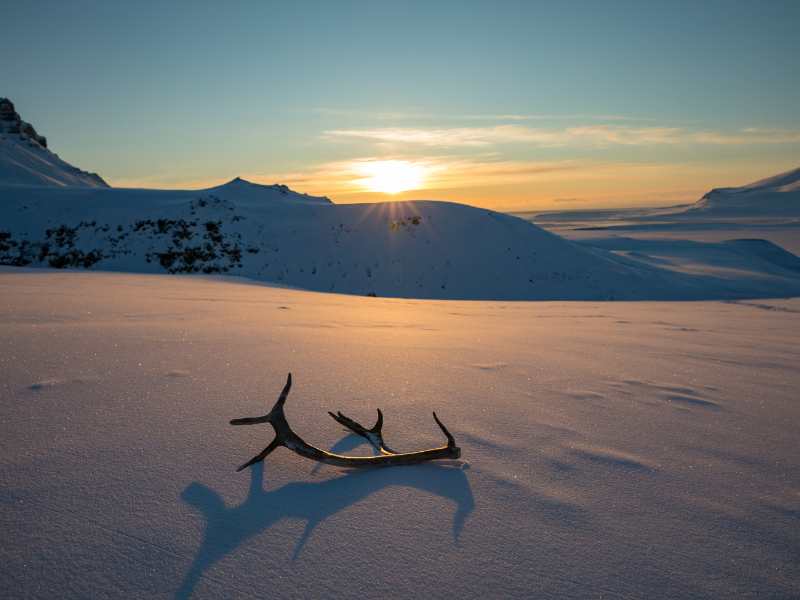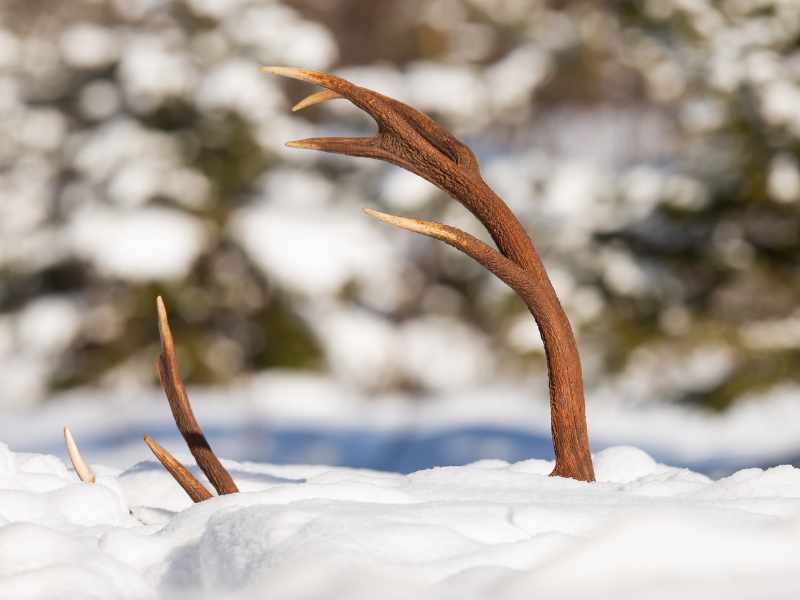Stepping into the woods after a fresh snowfall, you’re met with the crisp winter air and the sound of snow crunching beneath your boots.
This is more than just a hunt; it’s an in-depth lesson in deer behavior as it’s shaped by snow. Snow dramatically influences the strategy and timing of shed hunting.
The snow acts like a filter, concentrating or dispersing deer movement and shed drops depending on its depth and timing.
Here are the key takeaways:
- Light snow early in winter allows deer freedom of movement, resulting in more scattered sheds. Heavy snow later concentrates deer on packed trails and food sources, concentrating shed drops.
- Deep snow buries sheds, but also makes them stand out if antler tips are visible. Cruise quickly looking for tips poking above snow.
- Consider how snow affects deer migration and yarding behavior – mild winters allow deer to remain dispersed, while heavy snow pushes them to traditional wintering areas.
- Look for areas where snow melts first like sunny exposures and evergreen forests, as these allow easier deer movement.
- If your first shed hunt is after snow melt, try to learn about the winter severity to help focus your search areas.
- A shed dog can help locate buried antlers.
Light snow in early winter allows deer to move freely, scattering their shed antlers widely.
As winter progresses and the snow deepens, it changes the landscape and deer behavior.
Trails are packed down, and food becomes scarce, leading deer to frequent predictable paths where shed antlers are more likely to be found.
Deep Snow

Deep snow presents a dual challenge: it hides sheds while also making them easier to spot when tips peek out.
This situation requires hunters to be observant and quick, scanning the snow for signs of antlers.
Understanding deer migration and yarding behavior is crucial; mild winters keep deer dispersed, while heavy snowfall drives them to traditional yarding areas.
Snow melt patterns reveal key hunting spots, such as areas with southern exposure or under evergreens, where snow disappears first and deer are likely to travel.
read.. shed hunting rules
Knowledge of winter’s severity can guide your search areas if you’re hunting sheds after the snow has melted.
Shed Hunting Dog
A shed-hunting dog greatly improves your chances of finding antlers, even those hidden under snow. Their sharp sense of smell can pinpoint antlers, making your search quicker and more productive.
- The Shooting Gears offers an ultimate guide covering everything from selecting the right dog to advanced training techniques: How to Train a Dog to Shed Hunt: The Ultimate Guide.
- Realtree Camo provides practical advice on getting started with any breed, focusing on retrievers and the importance of basic obedience: How to Train a Shed Hunting Dog.
Before you go…
As the snow melts and the season ends, our quest for shed antlers wraps up, leaving us richer in knowledge and respect for nature.
Each shed is a reminder of the wilderness’s cycles and resilience.
Happy Shed Hunting!






